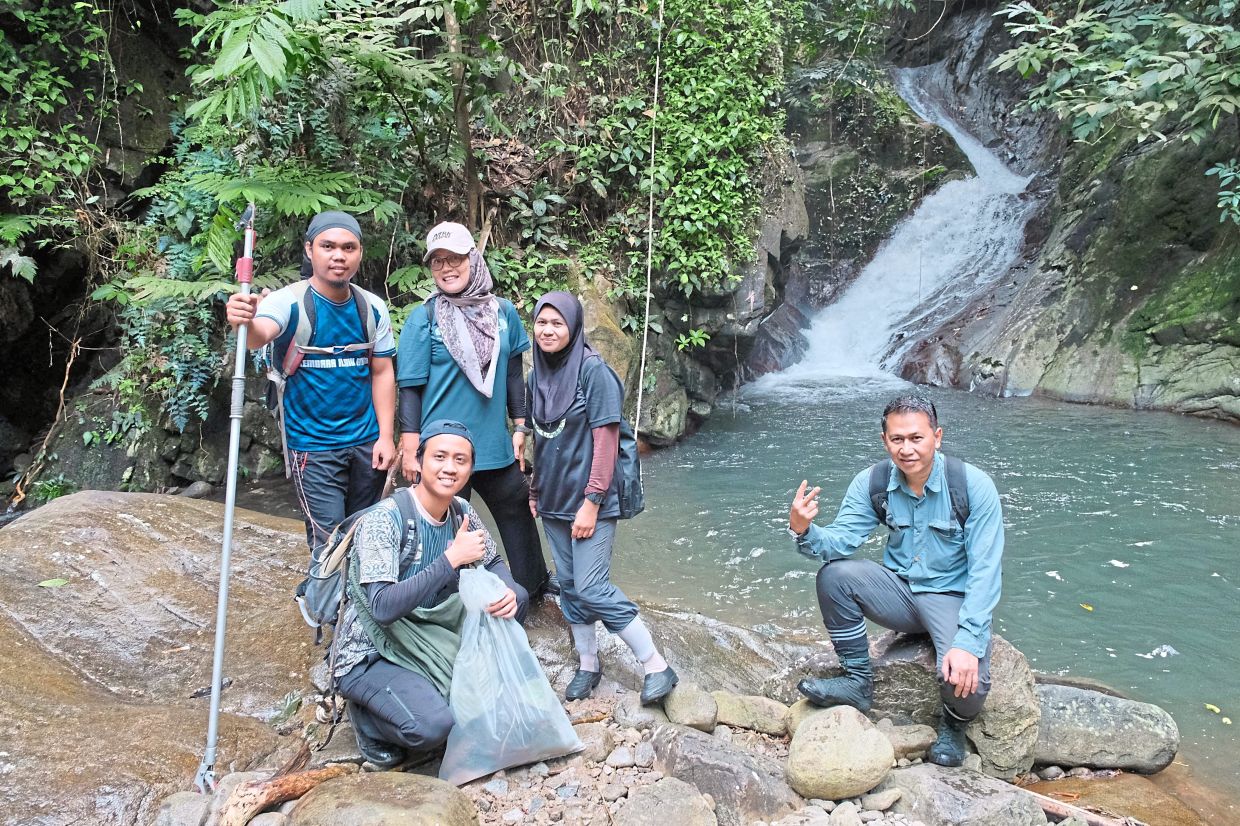
ECOTOURISM GEM TO DISCOVER IN SELANGOR
FLORA and fauna species never before seen on Gunung Nuang in Hulu Langat, Selangor, were discovered during a recent scientific expedition.
Apart from various ferns and snakes, the mountain also hosted a number of hornbill species along with several other species of birds.
Also spotted were deer, muntjacs (kijang) and Malayan tapirs, as well as claw marks believed to be of a sun bear.
ALSO READ: Gunung Nuang expedition an eye-opener for researchers
More remarkably, despite logging activities in the 1960s and 1970s, initial observations suggest that Gunung Nuang may have recovered.
Universiti Putra Malaysia Forestry and Environment Faculty deputy dean Assoc Prof Dr Mohd Nazre Saleh said this was based on the presence of several bioindicators such as numerous bats and damselflies at rivers.
Bioindicators refer to organisms or biological responses used to assess the environmental health of a natural ecosystem.
“The high number of bats points to a healthy biome, as the animals help in pollination of plants and seed dispersal.
“Damselflies, which are among the recent discoveries here, are usually found at Class I water bodies,” said Assoc Prof Mohd Nazre, who led the expedition.
In Malaysia, water is divided into Class I (no treatment necessary), Class II (conventional treatment required), Class III (extensive treatment required) and Class IV (poor quality and only suitable for irrigation).
Thriving ecosystem
Due to a sizeable presence of tropical hardwood trees, Gunung Nuang is classified as a montane dipterocarp forest.
Featuring mountainous terrains between 1,000m and 2,500m above sea level, these types of forest are often found in South-East Asia.
Assoc Prof Mohd Nazre, however, said there were noticeably low numbers of young dipterocarp plants like keruing and meranti species.
He believes this is because of the increased population of bamboos.
“Although not considered an invasive species, bamboo is known to grow very quickly and may reach up to 0.5m in a day.
“It is unclear if this caused the drop in dipterocarp plants, so more studies need to be conducted to explain the phenomenon,” he said.
Assoc Prof Mohd Nazre said the data collected would be studied before the findings are finalised and documented.
“The information will be collated and published by the Selangor Forestry Department (JPNS) and a seminar will also be held to present the findings,” he said.
The scientific findings will be incorporated into the development plans at Gunung Nuang to ensure their sustainability.
Preserving heritage
Gunung Nuang straddles the border with Pahang and Negri Sembilan.
It is nestled within the Hulu Langat Forest Reserve, which was gazetted on Jan 21, 1927.
The reserve is part of the Royal Selangor Heritage Forest, a 108,000ha landscape that encompasses 26 forest reserves in the state.
It was formerly known as Selangor State Park, but was rebranded following a decree by Selangor Ruler Sultan Sharafuddin Idris Shah.
On Jan 8, StarMetro reported that a master plan was also formulated to ensure balance between socioeconomic needs and environmental protection.
It outlines plans to build hiking trails in Gunung Nuang, a recreational area in Sungai Pertak and a venue for outdoor activities in Kemensah, among others.
The state is currently home to 79 forest reserves, spanning 251,000ha, roughly one-third of its land mass.
Gunung Nuang has one of the highest peaks in Selangor, measuring 1,493m above sea level.
Those wishing to hike here must apply for a permit from the central Selangor district forestry office.
There is currently a 150 per day limit on the number of issued.
Anyone caught entering without a permit could face action under the National Forestry Act 1984, which carries a fine of up to RM10,000 or up to three years’ imprisonment.
Hikers are also required to hire a mountain guide.
Ecotourism appeal
JPNS director Azhar Ahmad said the area would be turned into an ecotourism spot as it was popular among hikers and campers.
“Apart from this mountain, other spots earmarked for eco- tourism are Sungai Chiling (Kuala Kubu Baru), Sungai Kedondong (Batang Kali) and Sungai Tua (Selayang).
Azhar said although his department had existing data on Gunung Nuang, it was not comprehensive.
He hoped the involvement of local universities would provide enhanced expertise and knowledge-sharing.
“We need an updated database detailing the biodiversity composition before the appropriate course of action can be taken.
“We are also on the lookout for areas here that can be assigned with high conservation value (HCV) status.“These areas will be monitored and maintained regularly to preserve their biodiversity,” he said.
HCV denotes species or sites of critical importance in recognition of their environmental values.
Currently, four sites in Selangor forest reserves have HCV status — two in Kanching (Rawang) and one each in Semangkok (Kuala Kubu Baru) and southern Kuala Langat.
Azhar said no future expeditions to other areas were being planned for now.
“Such programmes need to be considered carefully as they require manpower and are time-consuming,” he added.
The Peninsular Malaysia Forestry Department (JPSM), on its website, stated 44 expeditions had been undertaken at forest reserves over the decades.
They involved experts from multiple disciplines to examine the ecosystem, biodiversity, eco- tourism, geology, archaeology and socioeconomic factors.
“Focus is given on aspects of preservation, conservation and holistic use of the natural resources found inside these forests,” it said.
2024-09-16T23:14:33Z dg43tfdfdgfd